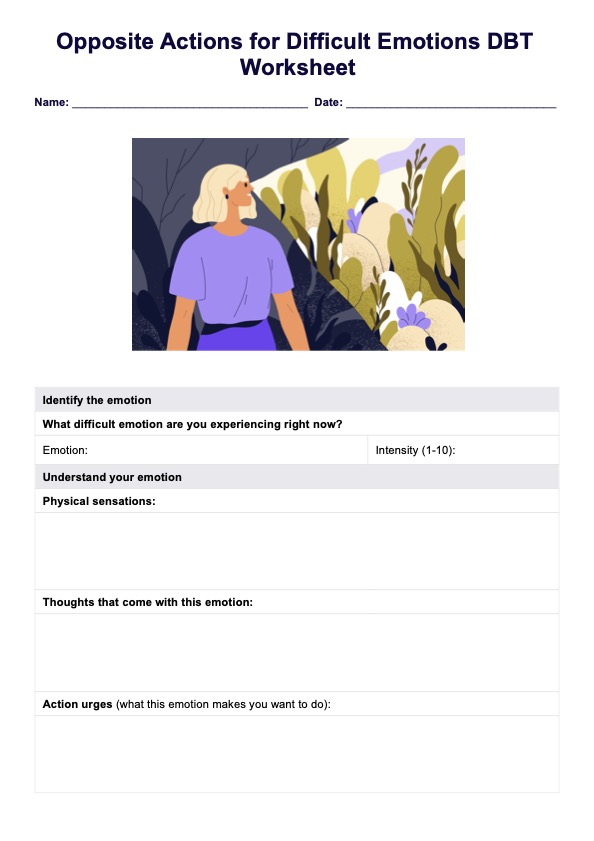The time it takes can vary depending on the individual, but generally, it should take about 20-30 minutes.

Opposite Actions for Difficult Emotions DBT Worksheet
Discover the benefits of the Opposite Actions for Difficult Emotions DBT Worksheet. Enhance emotional regulation, boost self-awareness, and reduce distress.
Use Template
Opposite Actions for Difficult Emotions DBT Worksheet Template
Commonly asked questions
This worksheet can help individuals manage intense emotions more effectively, reduce emotional distress, and improve self-awareness and emotional regulation skills.
This worksheet is most effective when used during intense, overwhelming emotions causing distress or leading to unhelpful actions.
EHR and practice management software
Get started for free
*No credit card required
Free
$0/usd
Unlimited clients
Telehealth
1GB of storage
Client portal text
Automated billing and online payments











